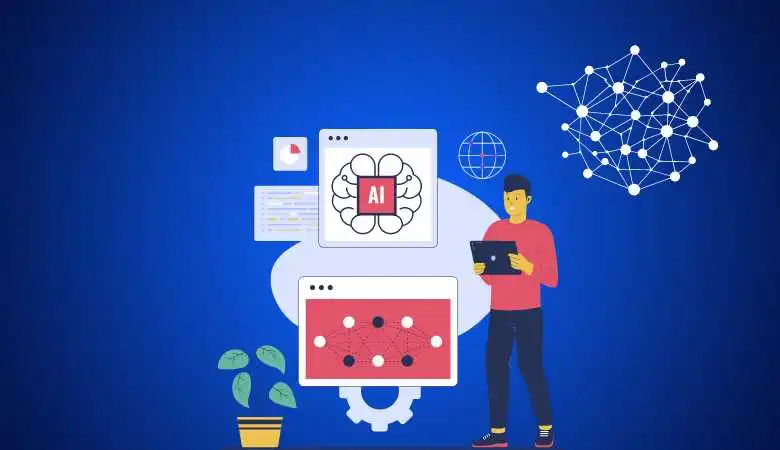What is Deep Learning, Its Applications, and Its Future
Work in artificial intelligence continues to grab headlines, and it is increasingly possible that the long-used concept of a ‘machine’ is becoming obsolete. However, despite its frequency of use, do we know what deep learning is exactly?
If we look at the literal definition of deep learning, the concept would be translated as ‘deep learning’ or ‘machine learning’. We are in contact with it when we see advertising on Facebook for something we have written about on our wall, when we write on the predictive keyboard of a mobile phone, when we use voice recognition programs or when we interact with ‘chatbots’.
Deep learning or how to imitate our neural connections
Behind the concept of deep learning is a group of algorithms that imitate the human brain ‘learning’ to recognize repetition patterns, specific words, frequent behaviours, etc. The RAE defines these algorithms as an “ordered and finite set of operations that allows finding the solution to a problem”—they work by ‘imitating’ the neural work of the brain.
Deep learning applies advanced machine learning algorithms to model high-level abstractions in data using multiple processing layers. This technique is essential for complex tasks such as image recognition, natural language processing, and prediction—temporal series.
‘Deep learning’ follows a layered process that simulates “the basic functioning of the brain that is carried out through networks of neurons. In deep learning, these artificial neural networks would be “layers”, can be read in an article published in “El Diario’. In other words, deep learning uses statistical models to locate patterns in environments characterized by a certain randomness and, in this way, be able to differentiate them automatically.
Deep learning is a branch of machine learning and a field belonging to artificial intelligence (AI) that develops in these ‘layers’ or levels. The first layers recognize concrete details, while the last recognize more abstract patterns and generate a final result.
Deep learning applications
The most recurring example when explaining deep learning is the recognition of handwritten digits. From a very early age, children are taught to differentiate numbers – a two is not the same as a 3, and a 5 has nothing to do with a 7 – although no one represents them precisely the same – some curl the 2 in their initial part, who emphasizes the angles of the five and who divides the 7 in half with a line more or less parallel to the line on which he writes.
The actions of the deep learning model are most easily identified in numbers 1 and 8. The criteria taught in daycare centres are clear: 1 is a vertical line, and eight comprises two circles, one above the other. In this case, ‘machine learning’ seeks to formalize these ideas and find a way to create models with which, by writing our version of 1 and 8 on a tablet, the device interprets that those and only those are the figures that we are trying to reflect on the screen.
The importance of GPUs in ‘machine learning’
Although deep learning algorithms have been explored for decades, three circumstances have coincided in recent years that have motivated greater and faster development.
- On the one hand, today’s society has generated enormous amounts of data that must be analyzed, collected, and exploited.
- Secondly, greater storage capacity prompted research in this regard.
- Finally, the proliferation of GPUs—graphic processing units—provided the necessary power to implement parallel processing, a field in which the work of the multinational microprocessor manufacturer Nvidia should be highlighted.
According to information made public by this company, GPUs have been decisive in expanding deep learning since they are used “to train deep neural networks using data sets an order of magnitude larger in less time and using system infrastructures.” considerably less.”
The text shows that GPUs have become the favorite processors in big data because they “have thousands of processing cores and a calculation speed between 10 and 100 times greater than that of CPUs alone.”. They have become unbeatable rivals—until now.
Expert in deep learning, the profession of the future
In a panorama where machines tend to act autonomously, learning from their ‘mistakes’ and enhancing their ‘successes’, the human presence in the process seems limited to managing the data with which the devices work. In this way, human intervention in the future will be restricted to supervised learning and algorithm programming.
This prevailing omen has motivated the emergence of a new job position that until now did not exist: the figure of an expert in deep learning. Master’s degrees have been born that respond to the new demands of the educational market—for example, the University of offers a degree in this subject after passing a 60-credit course.
In the program, the University explains what skills students will acquire after passing the planned training. Among them are knowledge of the “formal foundations of machine learning tools”, implementation of the different algorithms in high-level languages to solve real problems, and proposal of solutions based on deep learning from a perspective that considers ethical, legal, social, and economic aspects.
To complete the master’s degree, students must know about computing and statistics, two faculties that will help them identify behavioral patterns.

